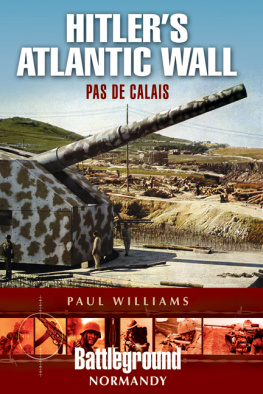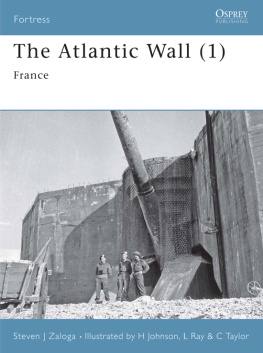

First published in Great Britain in 2011 by
Pen & Sword Military
an imprint of
Pen & Sword Books Ltd
47 Church Street
Barnsley
South Yorkshire
S70 2AS
Copyright J.E. Kaufmann, H.W. Kaufmann, Aleksander Jankovic
Potocnik and Vladimir Tonic, 2012
ISBN 978 1 84884 387 5
eISBN 978 1 78337 838 8
The right of J.E. Kaufmann, H.W. Kaufmann, Aleksander Jankovic- Potocnik and Vladimir Tonic to be identified as Authors of this Work has been asserted by them in accordance with the Copyright, Designs and Patents Act 1988.
A CIP catalogue record for this book is available from the British Library
All rights reserved. No part of this book may be reproduced or transmitted in any form or by any means, electronic or mechanical including photocopying, recording or by any information storage and retrieval system, without permission from the Publisher in writing.
Typeset in Ehrhardt by Phoenix Typesetting, Auldgirth, Dumfriesshire
Printed and bound in England by CPI Group (UK) Ltd, Croydon CR0 4YY
Pen & Sword Books Ltd incorporates the Imprints of Pen & Sword
Aviation, Pen & Sword Maritime, Pen & Sword Military, Wharncliffe
Local History, Pen and Sword Select, Pen and Sword Military Classics,
Leo Cooper, Remember When, Seaforth Publishing and Frontline
Publishing.
For a complete list of Pen & Sword titles please contact
PEN & SWORD BOOKS LIMITED
47 Church Street, Barnsley, South Yorkshire, S70 2AS, England
E-mail: enquiries@pen-and-sword.co.uk
Website: www.pen-and-sword.co.uk
Contents
Dedication
To: Luci, Willy, Junior and Alpha.
Acknowledgements
We would like to thank the following people for their assistance on this project: Jens Andersen (information on German defences in Denmark and archival material), Dennis Blazey (material on German defences in the Channel Islands), Alain Chazette (information on the Atlantic Wall in France), Dennis Doeve, John Flaherty, Harald Isachsen (information and material on German artillery and Norway), Patrice Lang (photos), Alain Lecomte, Bernard Lowry, Svein Olsen (information and photos on fortifications in Norway and the Channel Islands), Bernard Paich (documents and information on the Atlantic Wall in France), Frank Philippart (information on the Atlantic Wall in Belgium), Dan Reedtz (information and photos on Danish and Norwegian fortifications), Erick Ritterbach (information on Atlantic Wall batteries in Norway), Rudi Rolf (information on typology and German fortifications), Marc Romanych, Gordon Rottman (German army TO&E), Martin Rupp (information on German coastal batteries), Hans Sakkers (information on the Atlantic Wall in the Netherlands), Herbert Shiller (photos), Colonel Michal Svejgaard (details on German radar), Paul Tackley, Lee Unterborn, Caspar Vermuelen and J.B. Wahl (information and plans on the Atlantic Wall in Norway).
Our reader, John Stokes, sadly passed away before completion of the project. We are also grateful to Danish historian Jens Andersen not only for providing a great deal of material, but also for helping edit the manuscript and serving as our reader. His help was invaluable.
Glossary of Terms
Abteilung: Battalion, detachment; administrative a department or section
Batterie: Battery
Bauform: Design
Behelfsbau (Bh): Provisional (temporary) construction
Beobachtungsglocken: Observation cloche with small openings; see Cloche
Beobachtungsstnde: Observation post and fire-control position
Bettung: Firing position; see Offene Bettung
Bodenstndig: Static unit . Often a coastal army division lacking mobility
Bucht or Bight : Bay or gulf; a bend in the shoreline
Cloche: French term for a fixed armoured cupola. The Germans refer to them as fixed turrets in most cases; see Beobachtungsglocken and Sechsschartenturm
Dombunker: Cathedral-type bunker, the name derived from its high curved roof. One type was used for railway guns and another for U-boats
E-boat: Allied term for German S-boats (fast torpedo boats)
Ersatz: Replacement
Festung: Fortress
Festungbereichen (FB): Fortified areas
Festung Pioneer Stab (Fest.Pi.Stab): Fortification engineer staff
Flugmeldedient or Flum: Aircraft warning service
Funkmess(ortungs): Radar (detection)
Gefechtsstand: Command post
Geshtzschartenstnd: Gun casemate
Hedgehogs: Steel pieces welded and bolted together to form an obstacle; Allied troops said they reminded them of childrens Jacks
Heer: German army
Heeres-Ksten-Artillerie-Abteilung or Regiment (HKAA or HKAR): Army Coastal Battalion or Artillery Regiment
Hemmbalken: Break beams or Stop beams; large wooden posts used to prevent landing craft from reaching a beach
Hemmkurven: Curved steel rail obstacles
Holzpfhlen: Wooden poles placed upright in fields to prevent air landings; referred to as Rommels asparagus
Kampfstand: Combat position mounting a machine-gun or an artillery weapon
Kernwerk: Core position of some fortresses
Kleinkampverbnde: Small combat units; flotillas of motor explosive boats and midget submarines
Kriegsmarine: German Navy
Ksten Verteidigung Abschnitt (KVA): Divisional sector for coastal defence
Ksten Verteidigung Gruppe (KVG): Regimental sector for coastal defence
Leitstand: Fire-control post
Luftwaffe: German Air Force
Marine-Artillerie-Abteilungen (MAA): Naval Artillery Regiment
Nachrichtenstand: Communications post
Nationalsozialistische Deutsche Arbeiterpartei or NSDAP : German National Socialist Workers Party (shortened to Nazi Party)
Oberbefehlshaber West (OB West): Commander-in-Chief West
Oberkommando der Wehrmacht (OKW): Armed Forces High Command
Oberkommando des Heeres ( OKH ) : Army High Command
Offene Bettung: Open gun positions, often concreted; in many cases they were circular with some covered areas for ammunition storage
Peilstand: Angle measuring post for a coastal artillery position, used to help determine the range of the target from a base station (often the command post)
Rumbootbunkers: Concrete pens for R-boats Rumboote: Motor minesweeper known as R-boat (not to be confused with the larger minesweepers known as Minensuchboote )
Regelbauten: Standard design (adjective Regelbau )
Ringstand: A design that includes an open emplacement usually circular for one man or a gun crew, inspired by the Italian Tobruk fortifications in North Africa
Schartenstand: Generic term for a casement or bunker for a machine-gun, antitank gun or artillery piece
Schnellboot: Fast motor torpedo boat or S-Boat (not to be confused with the much larger and slower torpedo boats)
Schnellbootbunkers: Concrete pens for S-boats
Schtzenloch: Weapons pits for riflemen, machine-guns or mortars; field fortifications consisting of permanent positions that could be part of strongpoints
Schwere: Heavy
Sechsschartenturm: Six-embrasure turret cloche mounting two machine-guns and periscopes; see Cloche
Seekommandant (Seeko): Regional sea commander or regional sea command
Seezielbatterie: Battery for engaging surface targets (ships)
Sicherung Division: Naval security formation equipped with various types of small vessel
Sonderkonstruktion (SK): Special design
Spall, spalling: Flakes of a material broken off a larger solid body; they can be produced by a variety of mechanisms, including as a result of projectile impact, corrosion, weathering, cavitation or excessive rolling pressure (as in a ball-bearing). Spalling and spallation both describe the process of surface failure in which spall is shed.
Next page

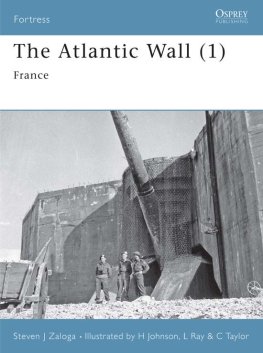
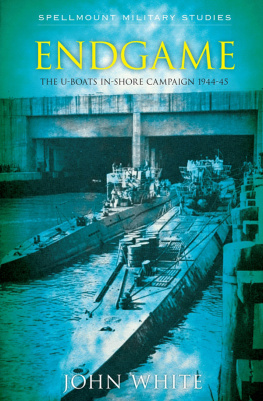
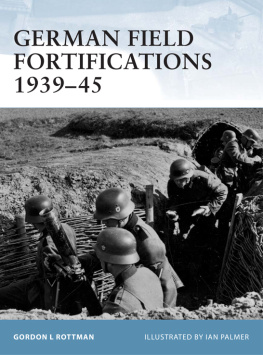
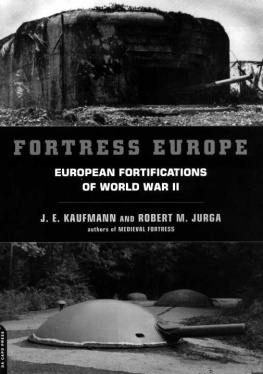
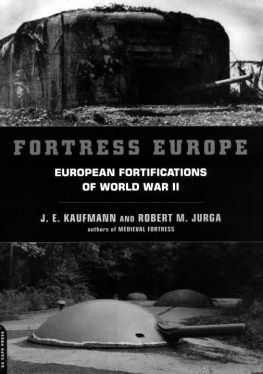
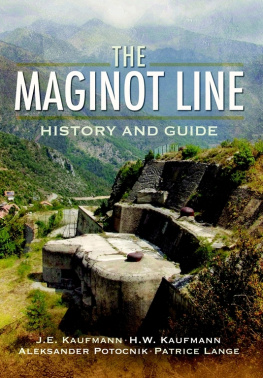

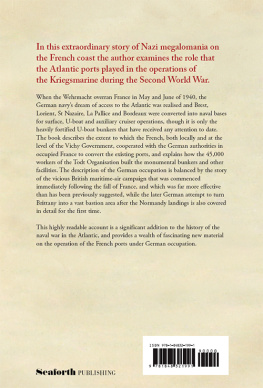
![Russell - Leaping The Atlantic Wall - Army Air Forces Campaigns In Western Europe, 1942-1945 [Illustrated Edition]](/uploads/posts/book/94591/thumbs/russell-leaping-the-atlantic-wall-army-air.jpg)
